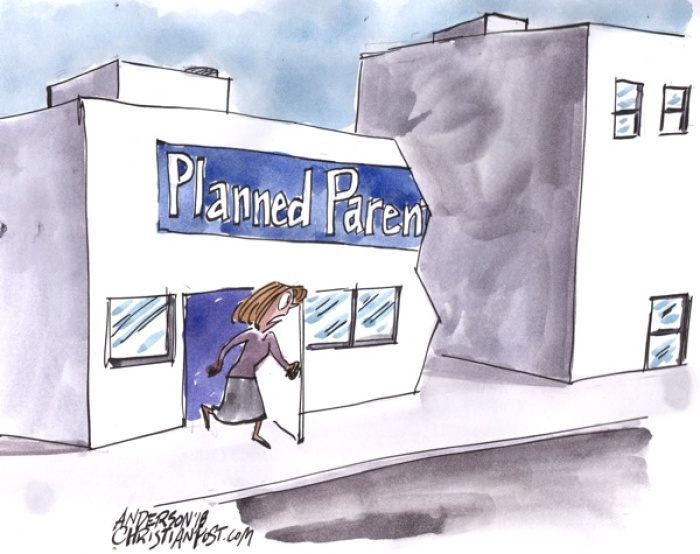Why Trump Can Cut Funds to Abortion Providers, but It Doesn't Go Far Enough

Last week, the Trump administration moved to cut funds to abortion providers. It was a great move, indeed. But we've got a lot more moves to make ourselves.
Last Friday, the White House announced a proposed regulation that would kill countless American women and force the rest to wear bright red dresses and white bonnets.
No—I'm just kidding. That's how the administration's move was described in a breathless hysteria by the pro-abortion crowd. What actually happened is that the administration issued a proposed rule concerning what's known as Title X of the Public Health Service Act. Here's a little history to understand it:
In 1970, Richard Nixon signed Title X into law. Its stated purpose was to provide low-income Americans with "acceptable and effective family planning methods and services" by providing grants to "public or nonprofit private entities."
Section 1008 of the law clearly states "None of the funds appropriated under this title shall be used in programs where abortion is a method of family planning."
In 1988, Ronald Reagan sought to close a big loophole in this law: While groups receiving Title X funds couldn't perform abortions themselves, they could still refer women to non-recipients who would. In fact, there was nothing in the law as interpreted that prevented recipients from sharing facilities or even staff with abortion providers. So abortion providers could still receive those funds, in a sort of accounting trick.
So the Reagan administration banned Title X recipients from counseling and advising women about abortion or referring them to abortion providers. Although the regulation was challenged in court, it was eventually upheld by the Supreme Court in Rust v. Sullivan.
But by the time that dust was settled, Bill Clinton was president and so it never went into effect.
Which brings me back to last Friday's announcement. The Trump administration's proposed rule, unlike the Reagan-era proposal, doesn't prohibit Title X recipients from counseling clients about the availability of abortion. But it does prohibit referrals to abortion providers.
So under the rule, a woman could be told that she might be "better off" having an abortion and why. But she can't be told the abortionist's name, phone number, and address, although she probably could be told how to Google it. Good, not great.
But far more important in this proposed rule is that it would end the charade of sharing staff and facilities with abortion providers while insisting that Title X money is only being used for family planning and health services.
In other words, "Clinics could continue to provide abortions only if they did so as a separate entity at a different location and with an entirely different staff."
So if Planned parenthood wanted Title X funds and to still perform abortions, it would have to create a separate entity to do them. Shouldn't be so hard, since, as Planned Parenthood claims, abortions make up only 3 percent of its services. Right?
As you might imagine, Planned Parenthood and its advocates are in a breathless panic. Even though, if Planned Parenthood decides to forfeit its Title X money, it would still keep 85 percent of the funds it receives already from the Federal government. And, women wouldn't go without needed health services, since "'non-abortion centers' outnumber Planned Parenthood abortion centers 'by more than 20 to 1 nationwide.'"
No women are being fitted for white bonnets, either real or figurative. The truth is, with this move, the Trump administration did what it could: it ended the egregious flaunting of Title X's clear intent to not promote abortion. Which, frankly, is more than the Republican-led Congress has done so far.
Above all, it underscores that politics alone cannot accomplish the real goal of the pro-life movement, which is to make abortion not illegal, but unthinkable.
That remains a job for the rest of us.
Originally posted at Breakpoint.




























